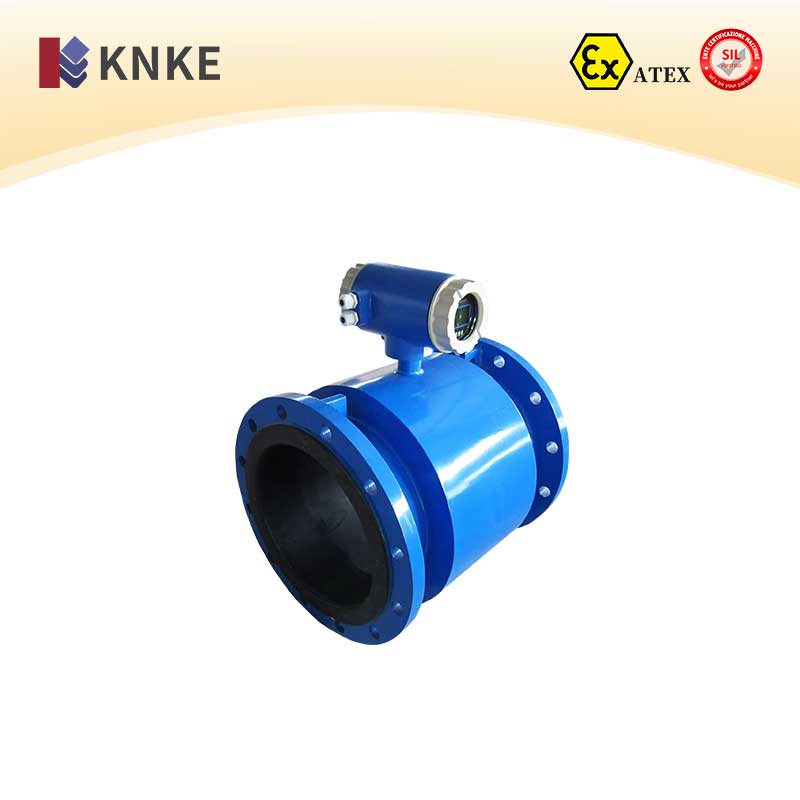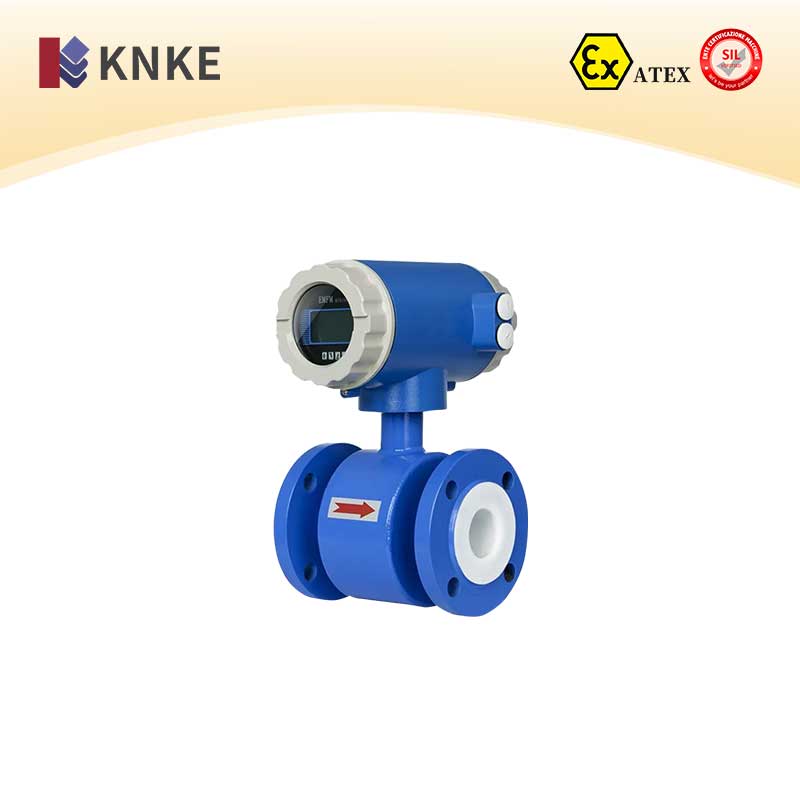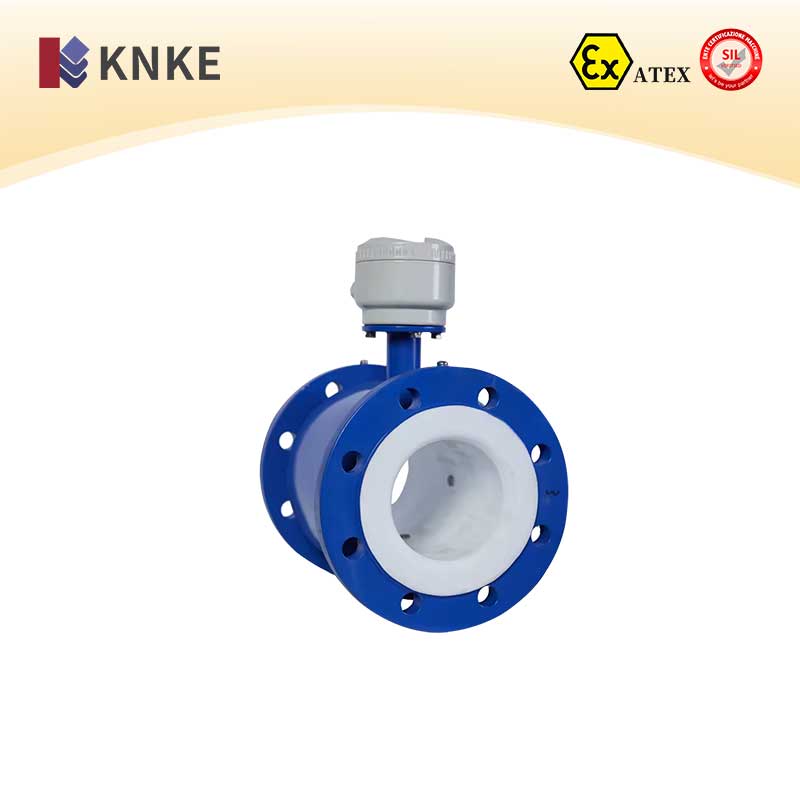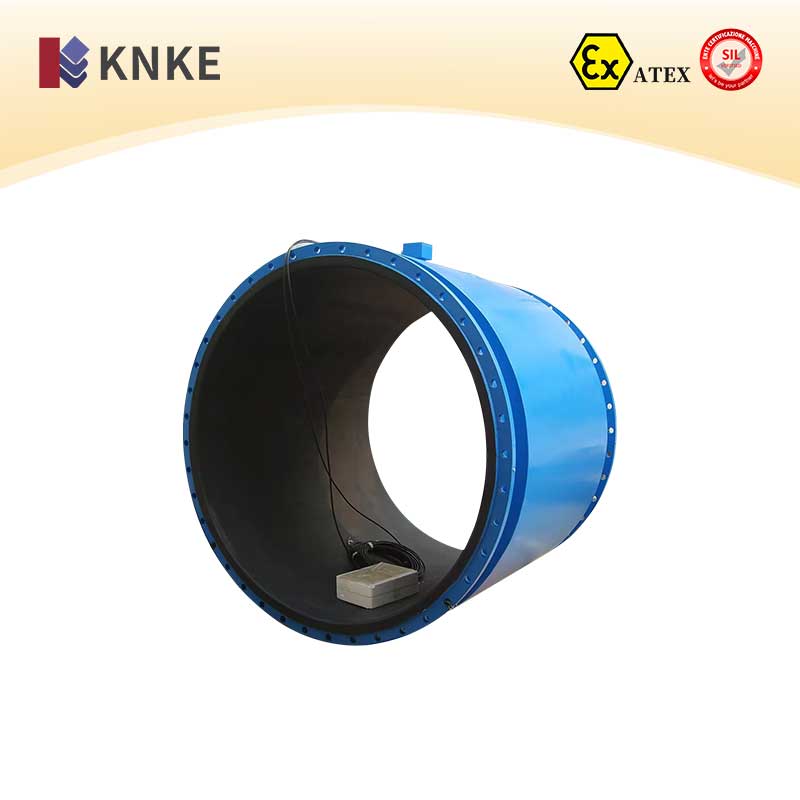Description
1. Overview of KNKE Sewage Flowmeter
The KNKE sewage flowmeter, based on Faraday’s Law of Electromagnetic Induction, measures the volumetric flow rate of conductive liquids. It integrates embedded microcontroller technology for digital excitation and features a CAN field bus for efficient communication. This innovation achieves advanced technology standards.
Designed for versatility, the flowmeter supports both real-time display and outputs a 4-20mA current signal for recording, adjustment, and control. It is extensively used in industries such as chemicals, environmental protection, metallurgy, pharmaceuticals, paper production, and water supply. Additionally, it can measure various challenging mediums, including solid-liquid two-phase flows, high-viscosity liquids, and highly corrosive or acidic solutions.
2. Key Features of KNKE Sewage Flowmeter
- Simple and Reliable Structure: With no moving parts, the flowmeter ensures a long operational life and requires minimal maintenance.
- No Pressure Loss: The design eliminates flow obstructions, preventing pressure drops and fluid blockages.
- Fast Response and Stability: The flowmeter’s quick response and excellent stability make it suitable for automated control systems.
- Independence from Physical Properties: Measurement accuracy remains unaffected by the medium’s temperature, viscosity, density, or pressure.
- Versatile Materials: PTFE or rubber liners and HC, HB, 316L, Ti, and Ta electrodes adapt to various media requirements.
- Multiple Configurations: Available in both pipeline and insertion types, with integrated or split-type designs.
- Secure Data Storage: Equipped with EEPROM memory to ensure safe and reliable data storage.
- High-Visibility Display: Features an LCD with backlight for clear and easy readability.
3. Technical Specifications
| Parameter | Value |
| Applicable Diameter | DN15mm – DN2600mm |
| Electrode Materials | 316L, HC, HB, Ti, Ta |
| Applicable Medium | Conductive liquids with conductivity >5μS/cm |
| Measurement Range | 0.1 – 10 m/s (expandable to 15 m/s) |
| Accuracy | 0.3%, 0.5%, 1.0% |
| Output Signal | 4-20mADC, RS485, RS232 |
| Pressure Resistance | 1.0 MPa – 16 MPa |
| Operating Temperature | Sensor: -20°C to 80°C |
| Environmental Humidity | ≤85% RH |
| Power Supply | 220VAC ±10%, 50Hz ±1Hz, 24VDC ±10% |
| Protection Level | IP65 (Integrated), IP68 (Split) |
4. Flow Range, Electrode, and Liner Materials
- Flow Range Recommendations:
- For industrial applications, the ideal fluid velocity is 2–4 m/s.
- For abrasive mediums, the velocity should be less than 3 m/s to minimize liner and electrode wear.
- For viscous liquids, a velocity greater than 2 m/s is recommended to reduce material buildup on the electrodes.
- Electrode Materials:
- 316L Stainless Steel: General-purpose material with corrosion resistance.
- Hastelloy C (HC): Excellent for highly corrosive media.
- Hastelloy B (HB): Suitable for reducing acids.
- Titanium (Ti): Ideal for seawater and chloride-rich environments.
- Tantalum (Ta): Exceptional corrosion resistance, suitable for highly acidic solutions.
- Lining Materials:
- PTFE: Resistant to high temperatures and corrosive chemicals.
- Rubber: Durable for general-purpose applications.
5. Applications of KNKE Sewage Flowmeter
The KNKE sewage flowmeter is ideal for a variety of industries, including:
- Chemical Industry: Measuring corrosive liquids, acids, and bases.
- Environmental Protection: Monitoring wastewater and effluent flows.
- Water Supply: Managing urban and industrial water distribution systems.
- Metallurgy and Mining: Measuring slurry and mixed-phase media.
- Pharmaceuticals: Ensuring precise fluid measurements in production lines.
The KNKE sewage flowmeter combines precision, durability, and versatility, making it a reliable choice for industrial applications. With its advanced electromagnetic technology and robust design, it meets the demands of modern industries, providing accurate flow measurements for a wide range of conductive liquids.




